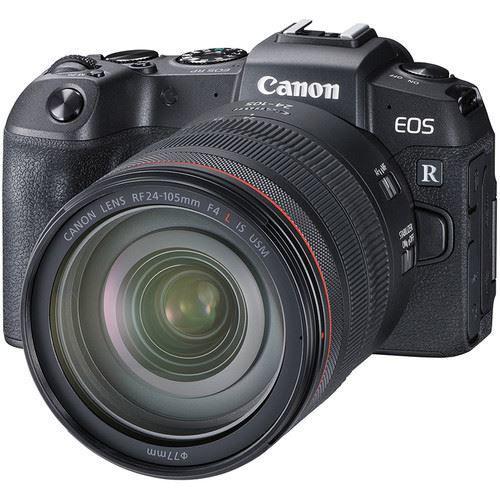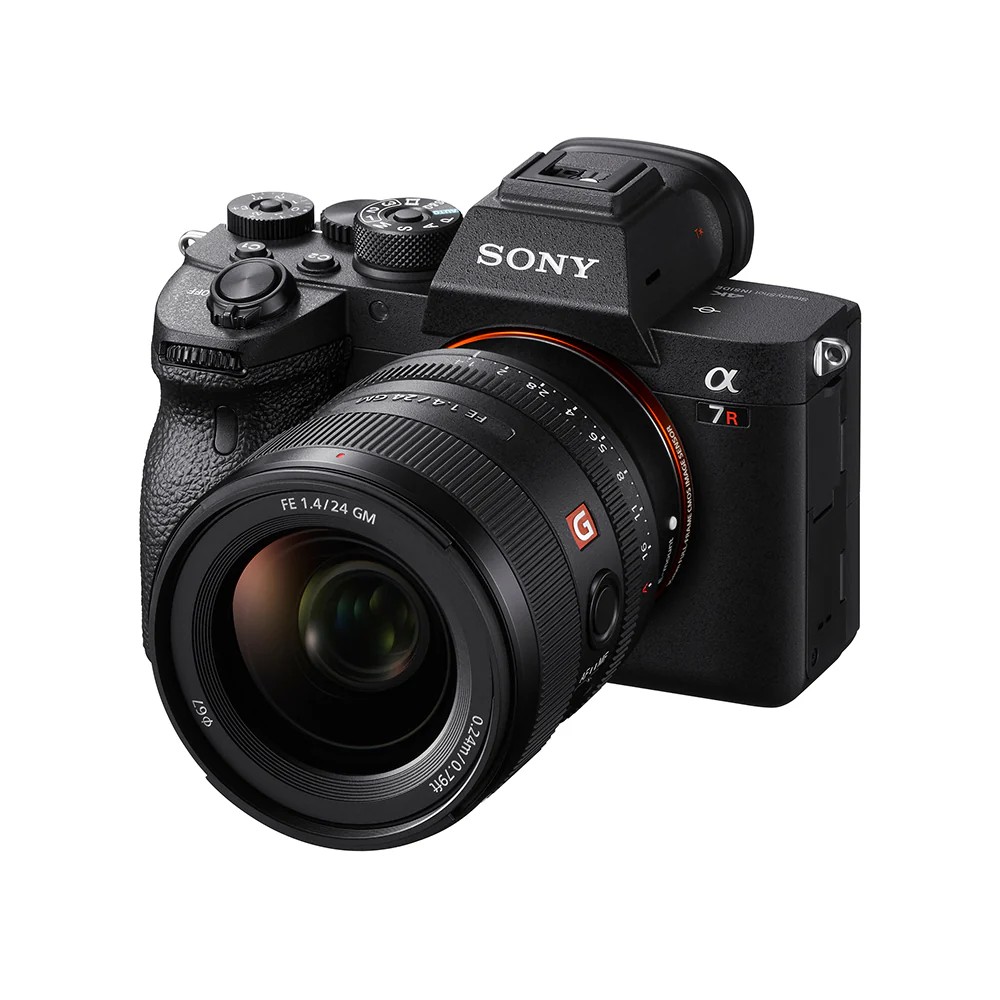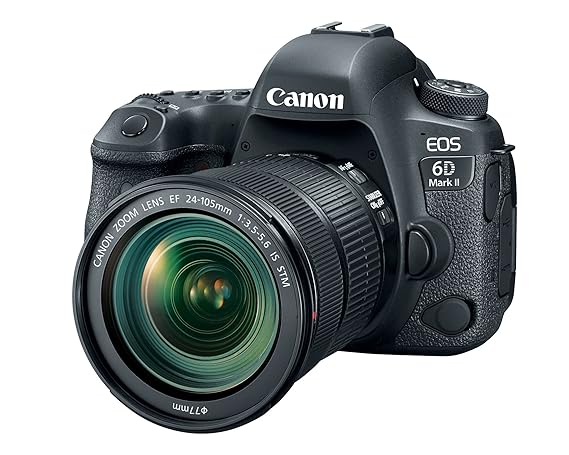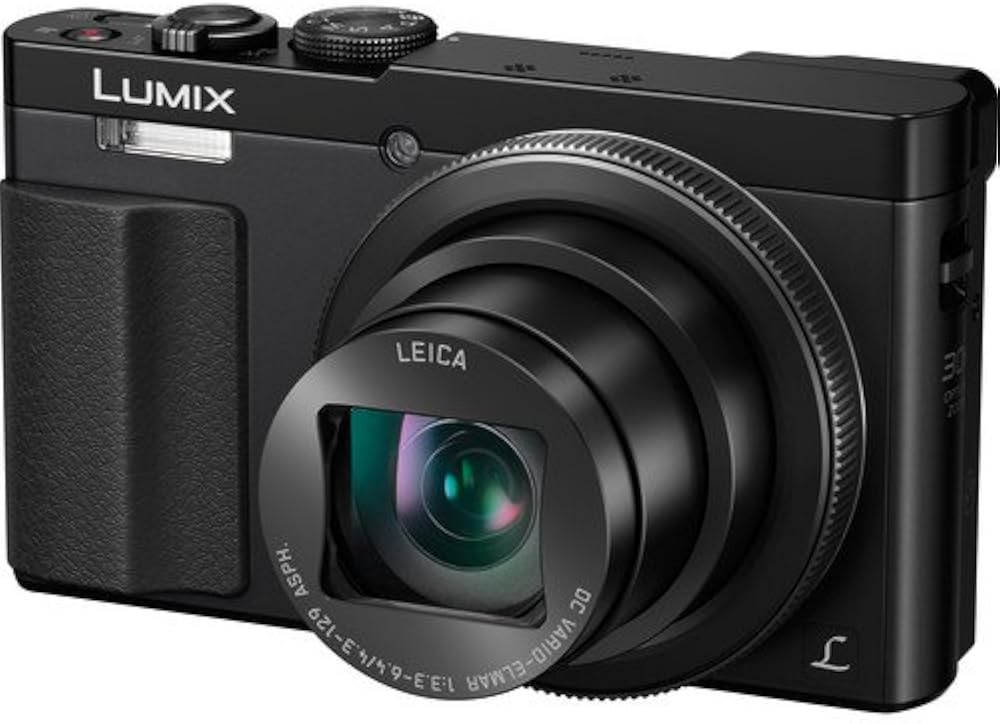Food photography is becoming increasingly popular among professional and amateur photographers alike.
If you want to take your food photography to the next level, having the right camera is a must.
It can be difficult to decide which camera is the most suitable for taking delicious photographs of your culinary creations with the abundance of models available.
Having personally tried and tested some of the best cameras on the market for food photography, I know which ones tick the right boxes.
I have found Canon EOS RP to be the best camera for food photography.
This incredible camera captures some of the highest quality images with a vast selection of lenses to showcase the finest details of food.
With advantage autofocus technology, exceptional shutter speed and impressive exposure compensation, the Canon EOS RP is unrivaled.
Whilst the Canon EOS RP is undoubtedly a superior camera for food photography, every photographer will have their own requirements.
If you are in the market for a food photography camera, you may find that this camera does not completely fill your needs.
Thankfully, I tested another 4 cameras also finding the most affordable and the most beginners friendly camera.
When shopping for the best camera for food photography, a few questions may spring to mind.
- What to consider when shopping for a camera for food photography?
- What is the price range of the best camera for food photography?
- What camera do professional food photographers use?
Through research and personal experience, I can certainly supply the answers to those questions so read on to find out more.
Best Camera for Food Photography – Reviews
Food photography is an art form that requires the right equipment to capture the perfect shot. Of the 5 cameras tested, I found some incredible tools for food photography.
Canon EOS RP – Best Food Photography Camera Overall

The Canon EOS RP is an excellent choice for food photography, offering a great combination of features and capabilities.
With its full-frame sensor, fast autofocus system, and customizable controls, it’s well-suited to capturing the details of your culinary creations.
Plus, the compact size makes it easy to transport and set up in any kitchen or restaurant setting.
File Size – Large file size, you can capture the highest quality images and videos with ease. Raw files are approximately 31.3MB per shot with 6,240 × 4,160 pixels.
Close Up Shots – This camera’s close up shots are crisp, clear and detailed. With the right lenses, you can capture the beauty of food in stunning detail.
A popular choice for food photography is the Canon EF 100mm whilst a zoom lens offers greater flexibility. The Canon EF 70-300mm lens offers superior value for money with an incredible range of close up capabilities.
Whether it’s a macro shot of a single ingredient or an overhead shot of an entire meal, Canon EOS RP can make your food photography look amazing.
4K Resolution – Records in superior 4K resolution for stunning food videography.
Exposure Compensation – Boasts Canon’s incredible exposure compensation technology for crisp and clear imagery in all light conditions.
ISO Range – 100-40,000
Auto Focus – Advanced autofocus technology which can focus in almost complete darkness.
Battery Life – Canon states this camera’s battery life lasts up to 220 shots on a single charge. However, from experience, it lasted for 90 minutes of continuous shooting and approximately 550 photos.
“Whether you’re looking to take professional quality images for a cookbook or just want to capture the beauty of your home cooking, the Canon EOS RP is an ideal camera for food photography.”
Sony a7r IV – Best Food Photography Camera for Beginners

Sony A7R IV is a powerful and versatile camera that is becoming increasingly popular among food photographers.
It offers a wide range of features and settings that make it ideal for capturing the perfect shot of your favorite dishes.
With its 61-megapixel sensor and advanced autofocus system, the Sony A7R IV is capable of producing stunningly detailed images with excellent color accuracy.
Additionally, the 5-axis image stabilization makes handheld shooting easier than ever before.
File Size – Raw images have a minimum file size of 61mb for compressed images and 122mb for uncompressed.
Close Up Shots – Sony’s incredible autofocusing and image stabilizing technology supports the close up capabilities of Sony lenses. To complement this camera, a Sony 50mm lens is a great entry level prime lens that is inexpensive yet high quality, perfect for flat lays and tablescapes.
4K Resolution – Whilst this camera is more suited to photography than videography, the Sony a7r IV does record in 4K resolution.
Exposure Compensation – Dedicated dial to adjust exposure in challenging lighting conditions.
ISO Range – Minimum 50 to maximum 102,400.
Auto Focus – Boasts Sony’s most powerful autofocus technology to date from crisp, clear and detailed imagery.
Battery Life – Up to 580 shots per charge.
“With its wide range of features, the Sony a7r IV is perfect for capturing mouth-watering food photos with amazing detail and clarity.”
Nikon D3500 – Best Food Photography Camera for Battery Life

Nikon D3500 IV is a great camera for food photography.
It has all the features that a professional food photographer needs, such as 24.2-megapixel resolution, 11-point autofocus system, and an ISO range of 100 to 25,600.
With its lightweight and compact design, it is easy to carry around and take pictures in any situation.
The camera also comes with a variety of creative effects that can be used to make your food photos look even more beautiful and appetizing.
File Size – Raw file size of 20.5mb.
Close Up Shots – With the close-up shots feature, you can get amazingly detailed shots of dishes. Nikon’s 60mm lens is a great option for flatlays and close up shots whilst a 105mm will capture the finest details of ingredients.
4K Resolution – This camera does not support 4K recording but does offer 1080p videos at 60fps.
Exposure Compensation – Easy to adjust the amount of light entering your camera’s sensor to capture finely tuned images.
ISO Range – 100 to 25,600 offering flexibility when shooting in different lighting conditions.
Auto Focus – Powerful autofocus that locks in on both stationary and moving objects.
Battery Life – Captures up to 1,550 shots per charge and can be used for up to 990 shots in Live View mode making it one of the best food photography cameras for battery life.
“With its intuitive design and powerful features, the Nikon D3500 IV will be your perfect companion when it comes to capturing delicious dishes!”
Canon EOS 6D Mark II – Best Food Photography Camera for Affordability

The Canon EOS 6D Mark II is a powerful and versatile camera that is perfect for food photography.
It offers a wide range of features, including a full-frame sensor, fast autofocus, and an ISO range of 100-25,600.
With its excellent low-light capabilities, you can take stunning photos even in dimly lit restaurants.
The camera also has an impressive dynamic range that allows you to capture the subtle details of your food.
File Size – Raw file size of 32.6mb.
Close Up Shots – Supports incredibly detailed shots through a wide range of lenses. This camera is great for affordability and a budget-friendly lens option is the Canon EF 70-300mm. This zoom lens offers great shooting flexibility without having to purchase multiple lenses.
4K Resolution – Offers 4K resolution video recording.
Exposure Compensation – Exposure compensation dial that allows you to adjust the exposure of your photos and videos easily.
ISO Range – 100 to 25,600 offering flexibility when shooting in different lighting conditions.
Auto Focus – Boasts Canon’s Precision Focusing technology with 45 autofocus points for crisp, clear imagery even in low light.
Battery Life – Snaps up to 1,400 images per single charge and offers outstanding battery life performance.
“Whether you’re shooting in the studio or on location, the Canon EOS 6D Mark II is sure to give you beautiful results every time.”
Panasonic LUMIX S5 – Best Food Photography Camera for High Quality Photos

Panasonic Lumix S5 is a great camera for food photography enthusiasts.
With its 24 megapixel resolution, you can capture stunning images of your favorite dishes.
It also has an impressive autofocus system, allowing you to take sharp photos even in low light conditions.
Furthermore, the Panasonic Lumix S5 comes with a range of creative filters and settings that allow you to create unique shots that stand out from the crowd.
File Size – Creates super-high resolution photos with a raw file size of 165mb, the biggest we have tested.
Close Up Shots – The Panasonic LUMIX S 24-105mm lens is a great all-rounder to pair with the S5. This zoom lens offers a diverse range of view fields in one lens. This camera is also compatible with a number of Canon and Gloxy lenses for advanced lens options.
4K Resolution – Supports 4K recording.
Exposure Compensation – Enhanced and skillful exposure tools to high quality imagery in all lighting.
ISO Range – 100 to 51,200 with extended ISO of 204,800.
Auto Focus – The Panasonic LUMIX autofocus technology features one of the highest speeds and highest precisions of the market.
Battery Life – Up to 470 shots on standard mode. The Panasonic LUMIX S5 also boasts a power-saving feature enabling photographers to capture up to 1,500 images in a single charge.
“Whether you’re a professional photographer or just starting out, the Panasonic Lumix S5 will help you take your food photography to the next level.”
How to Buy the Best Camera for Food Photography
With so many cameras on the market, it can be difficult to decide which one is best for food photography.
Fortunately, there are some key features to look for when choosing a camera for food photography. These include image quality, resolution, lens selection, and autofocus capabilities.
With these factors in mind, you will be able to find the perfect camera for your food photography needs.
File Size
There are many reasons why file size is extremely important to food photography.
A higher file size has both pros and cons. Whilst it offers higher quality than lower file sizes, it also takes up more storage space and takes longer to load.
Deciding whether file size is important to you ultimately depends on your creative endeavors.
If you are an amateur food photographer snapping for fun or to gain experience, a lower file size may be more beneficial so you have more storage space.
However, it is also important to be aware of the file size when creating food photography images as it can have a significant impact on the quality of the final product.
File size affects how quickly images load, how much data needs to be stored and transferred, and even how the image looks when printed.
If you are planning to use your food photography for professionally printed imagery such as a cookbook, a high file size will result in a higher quality end result.
Understanding the importance of file size in food photography can help you create beautiful images that will make your audience hungry for more.
4K Resolution
If the primary use of your camera is strictly photography, 4K resolution may be irrelevant to you.
However, if you venture into videography, quality could be of the highest importance.
Many of the best cameras currently on the market now boast 4K resolution so if great video capabilities is a requirement of your camera, there is no need to compromise on lower quality recordings.
If you are unsure whether you need impressive video capabilities on your camera, consider that video is currently king on online platforms.
Video content can help support incredible food photography so it may help to have a versatile camera that can perform both functions.
If this sounds like it may be beneficial to you, a camera supporting stunning 4K resolution recording is the best choice.
Exposure Compensation
Exposure compensation is an important tool for food photographers to capture the perfect shot.
It allows the photographer to adjust the brightness of a photo, which is essential when shooting in different environments or with different lighting conditions.
When a camera has great exposure compensation, there is no need to worry about challenging lighting. This is particularly beneficial to professional food photographers who capture in different venues and environments regularly.
By adjusting exposure compensation, photographers can control how much light is captured by the camera sensor, which in turn affects how much detail and color are present in their photos.
Exposure compensation can help you take crisp, clear and detailed imagery in both low light and overexposed conditions.
Exposure compensation can also be used to bring out certain details in a dish, such as making the colors more vibrant or emphasizing texture.
By using exposure compensation, food photographers can create stunning images that accurately convey the beauty of their dishes.
ISO Range
Food photography is an art form that requires the right balance of light, composition and color.
Within this, a camera’s ISO range plays a key role in creating the perfect image.
The ISO range determines how sensitive the camera is to light, which affects the brightness and contrast of the photo.
By controlling this setting, photographers can make sure that their food photos look as vibrant and appetizing as possible.
The right ISO range can help to produce images with a higher degree of sharpness and clarity, while also helping to reduce noise and graininess in the image.
By selecting the correct ISO range for a particular food photography session, photographers can ensure that their photos look their best.
With a great ISO range, photographers can capture all of the intricate details of their food without sacrificing quality or clarity.
The best ISO setting can help create high quality images that will make your dishes look even more appetizing.
By understanding how to use and take advantage of your camera’s ISO range, photographers can take stunning food photos that will make any dish look delicious!
Auto Focus
Auto focus is a crucial tool for food photography, as it helps to capture the perfect shot.
Auto focus technology has revolutionized the way photographers take pictures of food, allowing them to capture delicious shots with ease.
With auto focus, photographers can quickly and accurately capture the details of a dish, making sure that all of its elements are in sharp focus.
Many food photography cameras with autofocus have lock-in functions that retain focus on the subject regardless of whether it is stationary or in motion. This is great for capturing moving imagery such as a dish being removed from the oven or pouring ingredients into a bowl.
Not only does autofocus save time and energy for food photographers, but it also ensures that their photos will be sharp and clear. No need to manually focus your camera, simply point and shoot with minimal effort.
Additionally, auto focus allows photographers to take pictures in low-light conditions without compromising on image quality.
This ensures that the food looks as appetizing as possible and makes it easier for them to create stunning images that will draw people in.
By using auto focus, food photographers can ensure that their photos look professional and capture the beauty of each dish.
Battery Life
Whilst battery life is key to any camera search, it is particularly one of the most important factors to consider when it comes to food photography.
A good battery life ensures that your camera can take a multitude of shots without having to worry about running out of power.
Taking pictures of food can sometimes be time consuming to get the right shot. With a short battery life, even if you manage to get the shot, it may not be of the highest quality if you were rushing to snap it before your camera’s juice runs out.
Additionally, a decent battery life also helps you take pictures in different lighting conditions and angles without having to worry about battery drain.
Furthermore, there is nothing more embarrassing than having your camera die in the middle of a project shoot.
Thankfully, the majority of cameras currently on the market have a decent battery life. However, if battery life is of particular importance to you, the Nikon D3500 and Canon EOS 5D Mark II are two of the most impressive cameras on the market in terms of battery life. Both cameras are exceptional for food photography.
All in all, having a good battery life is essential for capturing great food photos and making sure there is no compromise on capturing images that are vibrant and full of flavor.
Things to Ignore
When shopping for the best camera for food photography, the majority of camera settings and features can be beneficial to you in some way or another.
Every photographer uses a camera in different ways so there may be one element of a camera that is irrelevant to you but advantageous to another.
However, there are a handful of things to ignore when searching for the best camera for food photography.
Sound Quality – Unless you are stepping into the realms of professional food videography alongside your photography, sound quality is not of high importance to you. Most cameras in today’s market have decent audio should you need it and the sound quality is not an important selling point when looking for the best camera for food photography.
Video Stabilization – Again, crucial for videography but not photography, video stabilization is not a necessary feature for food photographers. Many camera brands use their state-of-the-art video stabilization as a unique selling point. Unless you are going to take full advantage of your camera’s video capabilities, video stabilization is irrelevant.
Best Camera for Food Photography – My Verdict
After extensive testing of all 5 cameras, the Canon EOS RP reigned supreme.
This camera creates stunning images of the highest quality thanks to its outstanding autofocus, exposure compensation and range of lens options.
Canon EOS RP – Best Food Photography Camera Overall

However, the Canon EOS RP may not be the best food photography camera for all as each photographer has different requirements.
To save you the trouble of extensive research, a further 4 outstanding cameras for food photography have been highlighted.
They include the Nikon D3500, a popular camera with professional food photographers boasting an impressive battery life.
Alternatively, for those just getting started in the realms of food photography, the Sony a7r IV is an incredible entry level camera and perfect for beginners.
When it comes to food photography, your camera is the most important item in your toolkit and with any of these 5 cameras, you can rest assured that you’ve chosen wisely.

